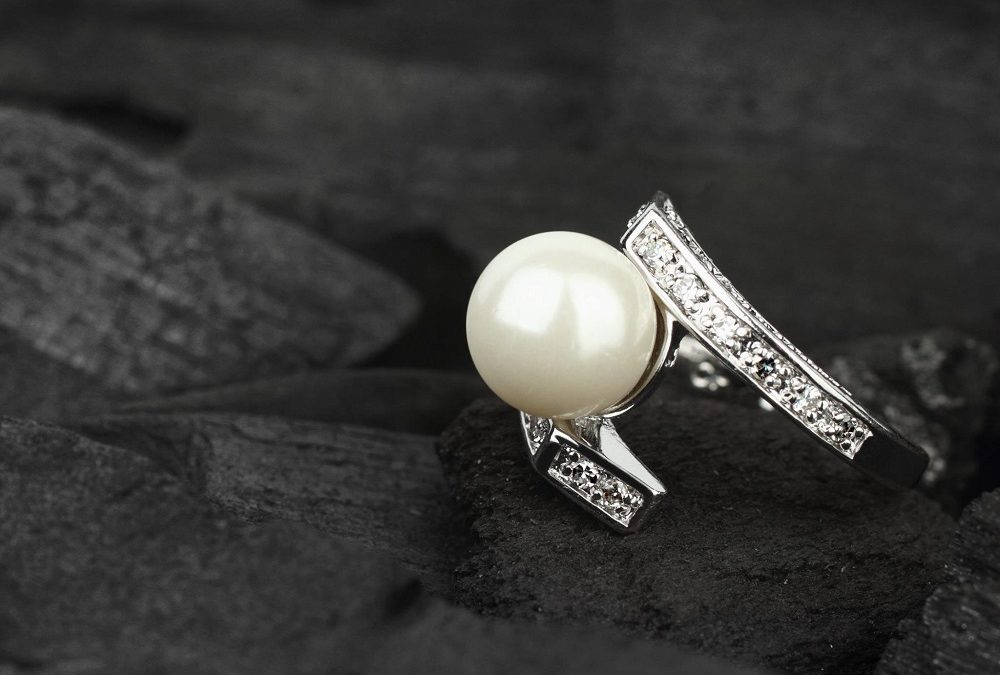Rare and spontaneous, pearls formed in the wild are the most valuable.
These jewels of the sea are formed when a grain of sand accidentally finds its way into the shell of an oyster or mollusk. To rid its “home” of the offending irritant, the sea creature builds a crystalline material called nacre around the grain in concentric circles, like the ocean’s waves. As the layers of nacre harden, they create the smooth, luminescent gem … which is why nacre is also known as mother of pearl.
These wild pearls are called natural pearls, which are very rare and treasured because they are made solely by chance. For centuries, the natural pearl has been admired as an object of beauty, representing something rare and fine. Today, most gem-quality pearls are made with the help of the human hand. A person places the grain of sand in a pearl oyster or a freshwater mussel that sits in warm water for several years before a pearl forms. The Japanese first began creating these cultured pearls in the late 19th century.
The Ideal Pearl
The ideal pearl is perfectly round, and its luster, surface, shape, color, size and origin contribute to its value.
- Luster is a combination of surface brilliance and glow, which is affected by the thickness of the iridescent layers surrounding a pearl’s nucleus and a clean, smooth, blemish-free surface.
- The perfect shape of round pearls is the rarest and most valuable, although the asymmetrical baroque pearl can also be lustrous and appealing.
- Whatever the pearl’s color, it should appear to emanate from deep within the pearl. Cultured pearls can be found in shades from rose to black or another you desire, because it can be created by the oyster or dyed by man.
- Measured by millimeter size, cultured pearls can be smaller than one millimeter, such as tiny seed pearls, or as large as 20 millimeters, such as a big South Sea pearl. As with diamonds, size influences price
Pearl Origin
- Cultured in China and Japan, Akoya pearls are known for their luster. Considered the classic pearl, they are white or cream with overtones of rose, silver or cream.
- Highly prized and precious, South Sea pearls are cultured in the silver or white-lip oyster found in the northern waters of Australia, Indonesia and the Philippines, and grow to exceptional size.
- Cultivated in mussels in lakes and rivers, Chinese Freshwater pearls are produced in a variety of colors and shapes.
- Mystical and dark, the popular Tahitian pearl is one of the most sought-after. Cultured from the black-lip oyster in the waters of the South Pacific, these large pearls come in a variety of colors including black, gray, burgundy, peacock and gold.
Whether wild or cultured, gem-quality pearls are the kind of non-traditional jewel she’s sure to love. Call us today for your custom designed jewelry piece made with pearls.
Indy Facets – Everyone’s Private Jeweler
Indy Facets seamlessly blends the expertise and full service of a traditional jewelry store with the value and convenience of a personal jeweler experience. We give you the face-to-face interaction with an expert that you deserve, in a private setting where you can relax and feel comfortable. Owner/Designer Shaun Goodyear and his team have earned an excellent reputation as Indiana’s private jeweler for engagement rings, custom design, investment grade diamonds, luxury Swiss timepieces, estate jewelry, jewelry repair and the highest level of customer service, available to you from an onsite, state-of-the-art Custom Design Studio and Gemological Laboratory by appointment only. You are guaranteed a unique, fun and exciting experience without the hype, pressure, judgment or uncertainty associated with other jewelry shopping options. Visit IndyFacets.com or call 317-810-1665 to schedule your appointment Monday thru Friday, 8 am to 4 pm.

